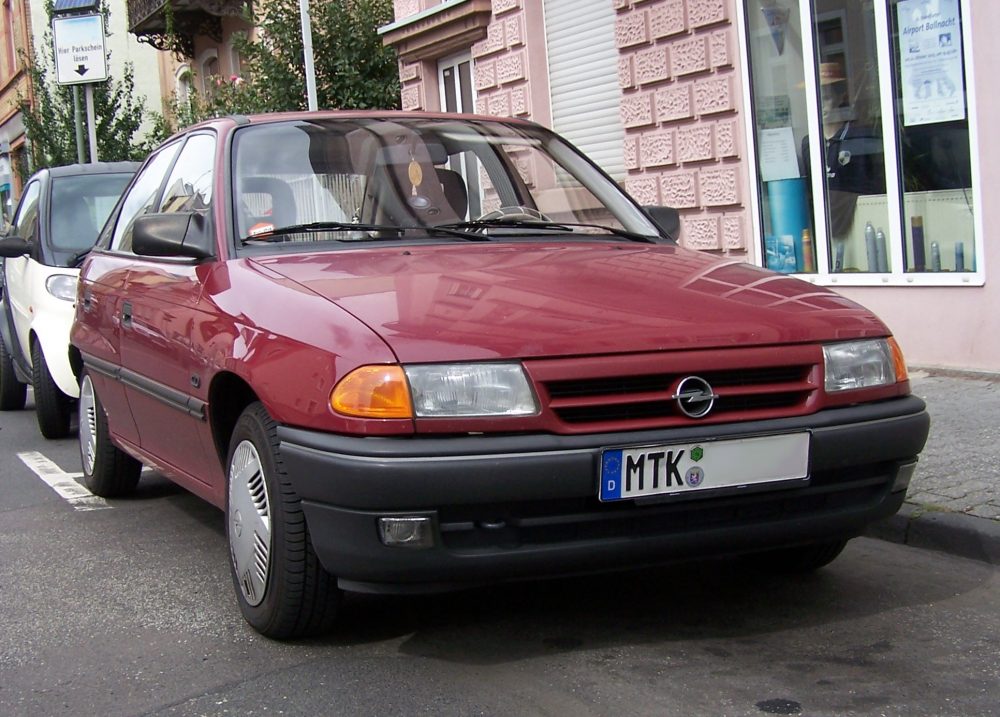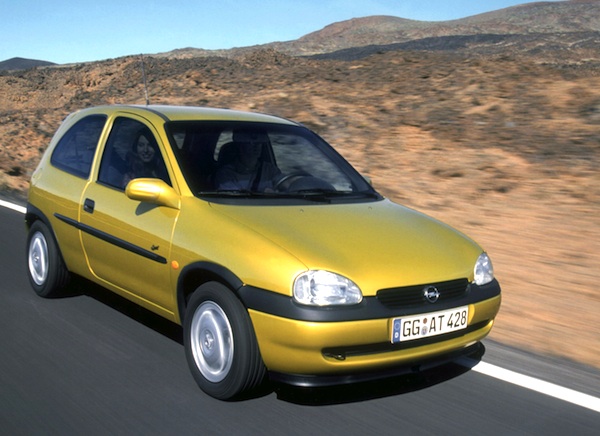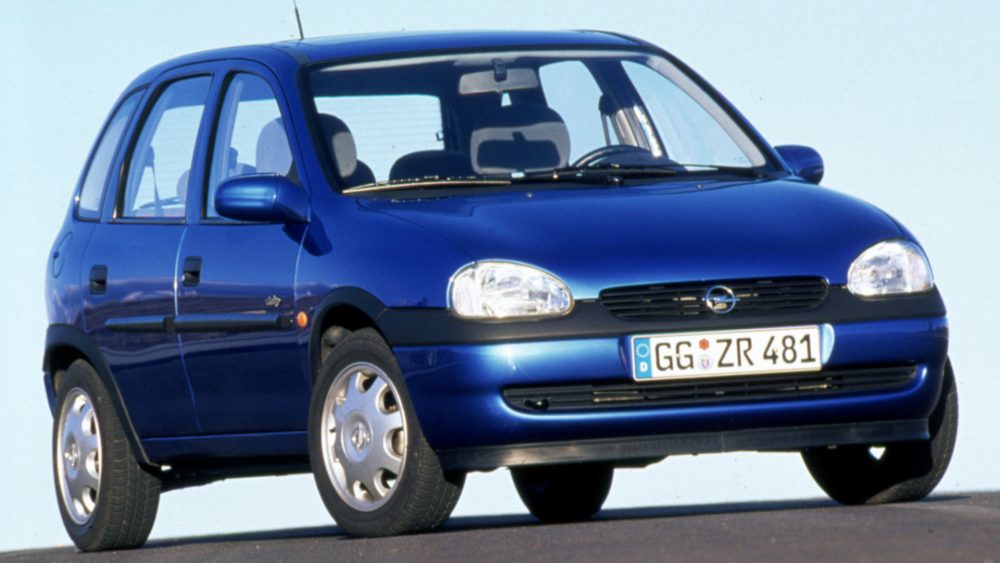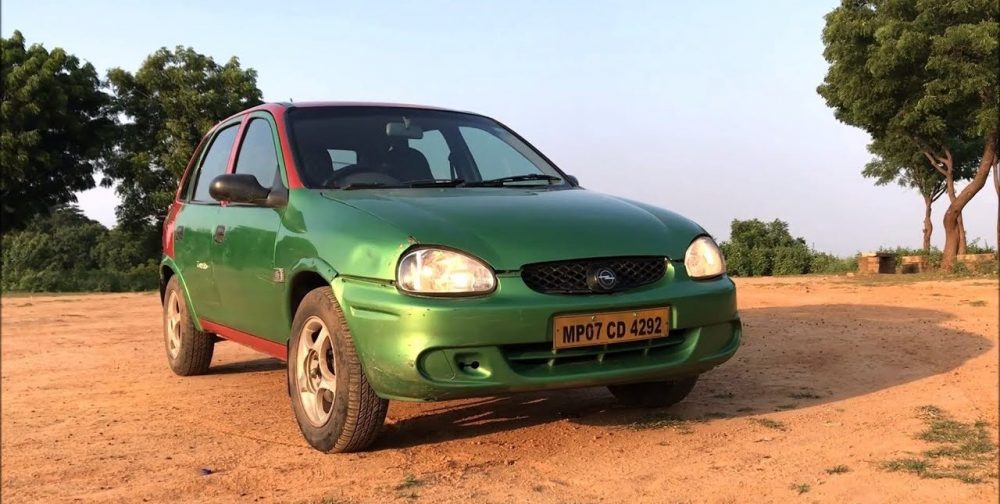General Motors. Not a lot of people know them nowadays and even fewer people have seen the cars they used to make when India had a barebone automobile industry. There first attempt to enter the market was though one of its premium subsidiaries called Opel India.
Opel India launched 5 cars in India bringing German build quality to our shores in an attempt to get a foothold and as we know, none of them worked as good as they wanted thus making Opel leave the Indian market in 2006 to be replaced by Chevrolet. Let’s travel back in time to see the cars Opel gave us and what could have been the reasons they failed to sell a lot of units.
Popular Read: 10 Forgotten Station Wagons (Estate Cars) Of India
Here are 5 forgotten OPEL cars in India:
-
Opel Astra

5 Forgotten OPEL Cars in India The Opel Astra was General’s Motor first C segment Sedan entry in India in the year of 1996. Astra offered some high-end features at the time of launch and a decent engine option.
A 53-litre petrol tank supplying fuel to a 1598 cc engine it produced 75.94 bhp with a torque of 121 Nm. It only had a manual transmission as an automatic was a rare sight to see.
It had a power steering, a slow acceleration of 0-100 in 15.8 seconds and a turning radius of 4.9-meter radius which sounds ridiculous in this day and age but was revolutionary back in the day.
Fun Read: 8 HM (Hindustan Motors) Cars In India That Are Now Long Forgotten
So why did the Opel Astra fail in India? The reason is Popularity.
It couldn’t gather a good enough fanbase or hold as it had to compete with companies like Honda and Mitsubishi bringing City and Lancer respectively. Indian consumers don’t like to budge call it inertia or fear to experience new things and they were comfortable with the other brands that were present in India before Opel came. -
Opel Corsa

5 Forgotten OPEL Cars in India Opel Corsa was GM’s attempt to finally set up in India. They launched three versions of Corsa ranging from Sedan which was the first one then a hatchback and a station wagon desperately trying to figure out which one would get them the boost they needed. Alas none of them did.
-
Opel Corsa Sedan

5 Forgotten OPEL Cars in India This Opel Sedan, simply named Opel Corsa was the most famous of all the models GM sold in India at that time. It was also one of the last cars that came to India and was decently packed with features and was a bit stronger than the other sedan Astra.
With an 86.79 bhp 110Nm petrol engine, Corsa had a 5-speed manual transmission with a fuel capacity of 58L. It had 4 cylinders and had a displacement of 1398cc.
With a top speed of 167 km/h, its acceleration was probably a bit faster than the Astra as its acceleration data is lost to time.
Read: The Many Cars Of Indian Politicians. From WagonR to Rolls Royce!
Opel Corsa was a comfortable sedan with a 5 seater option. Even though it was a name people knew it was still not enough to sell a lot of units.
The Sedan Opel Corsa had its rival in the likes of Esteem and the Accent which as we know are some strong cars to go against
-
Opel Corsa Swing Station Wagon

5 Forgotten OPEL Cars in India Corsa was made into a Station wagon version named the Corsa Swing. GM tried to make a station wagon like every other company at that time and they too like every other company failed. Station wagons never got any tractions in India so for this one, we can’t blame Opel and GM as it was a lost cause before it even began.
It was not that different from the Sedan version only that it was more luxurious and a little bit powerful
Corsa Swing had a 93.7 bhp, 203 Nm engine powering it. Only petrol variant like its brothers in arms it had a fuel tank capacity of 47L and was a 5 seater.
Suggested for you: 10 Hilarious Chinese Copy Cars You Should Check Out!
With a slow acceleration of 0-100 km/h in 10.5 seconds and a max speed of 210 km/h, that’s all you could expect from a station wagon of the ’90s.
-
Opel Corsa Sail

5 Forgotten OPEL Cars in India Corsa Sail was one last-ditch effort by GM and Opel India to finally do something in the automobile market. It was in the form of a hatchback.
The engine powering Opel Corsa sail was weaker than the other versions and had a top speed of 170 km/h. It was a 5 cylinder 5-speed manual transmission.
The hatchback version was also a 5 seater like the other Corsa so it can be obvious that it was not as spacious.
The engine was petrol like the other Opel cars in India that ever existed and had a displacement of 1389 cc.
The rival that Opel Corsa sail had to face was Santro. Yeah, Hyundai Santro which is still going strong so I guess this was also a failed attempt before it even began ( hindsight much).
-
Opel Vectra

5 Forgotten OPEL Cars in India When Opel Vectra came it was ahead of its time. A D-segment sedan it was a really strong contender yet it lost. This time too it was not Opel’s fault but the stubbornness of the Indian consumer.
How ahead of its time was Vectra you ask? It had Automatic Climate Control in the year 2002. Some of the cars coming in 2020 don’t have this yet. Vectra also had front power windows.
The engine was also stronger than the other cars with 145 horses pulling the car and 203 Nm of torque running it could reach a maximum speed of 208 km/h.
It was also a 5 seater like the other Opel cars and was spacious like the station wagon variant of Opel Corsa.
Unfortunately, it only sold 500 units.
What went wrong with OPEL in India?
As this happened in the past it’s easier to put on hindsight hat and judge what they could have done to sell better but at that time it wouldn’t have been easy to figure out these points and make a decision.
-
The service wasn’t good
GM and Opel had horrible customer service. It took them way longer to help some than it should have. Word of mouth spreads like wildfire and so did the news of Opel having terrible service so people avoided them like the plague and that was the first hit.
They could’ve had a better service to avoid this, doesn’t really need a lot of thinking for this one.
-
No localised spare parts supply chain
If your Opel car broke down and needed replacement of parts, guess what those parts would come from the UK and you would have to pay for them too. As you might have thought, it was not at all cheap. Parts coming from the UK was already costly and it would take long to get the parts which in turn would increase the time your car will stay in the shed just eating dust.
To fix this they could have made collaborations with local OEM or a car manufacturer like Maruti.
-
There were cheaper options
What Opel India offered was no doubt good, revolutionary even but what they didn’t account for was the cost. Indians like to get something for as cheap as possible and compared to other options Opel cars were costlier and drank more fuel than others so basically more fuel and higher base cost.
They could have started with a cheaper fleet of cars to get a feel of the Indian market and then bring out the big guns. It could have been greed to earn money as fast as they could or just a bad decision all that matters now that it failed.
This was a really fun trip through time and I personally would have wanted to see more Opel cars and how much more they could have offered us.





